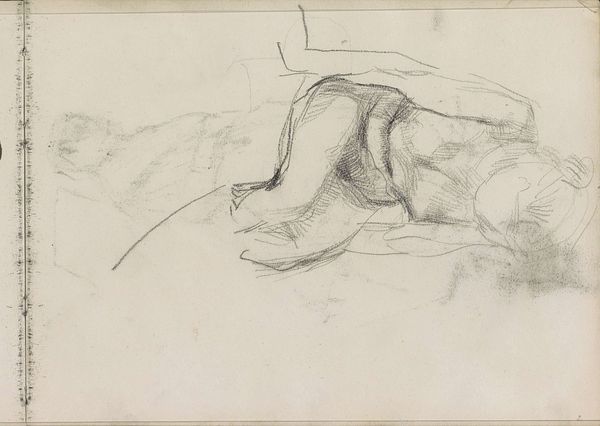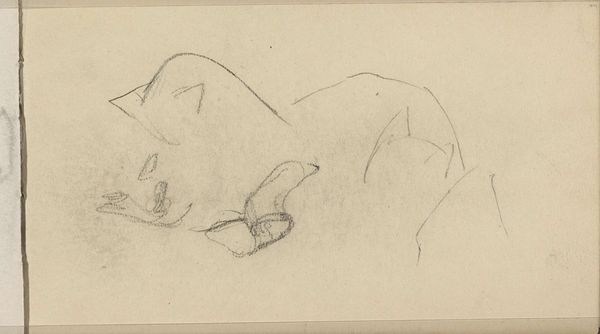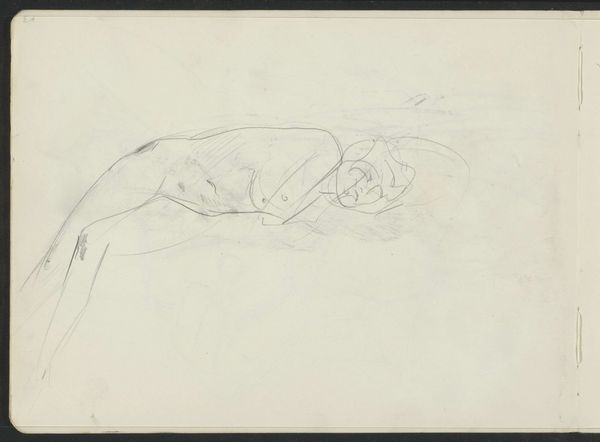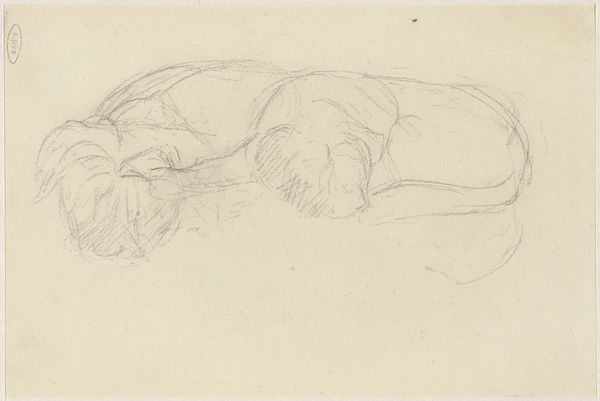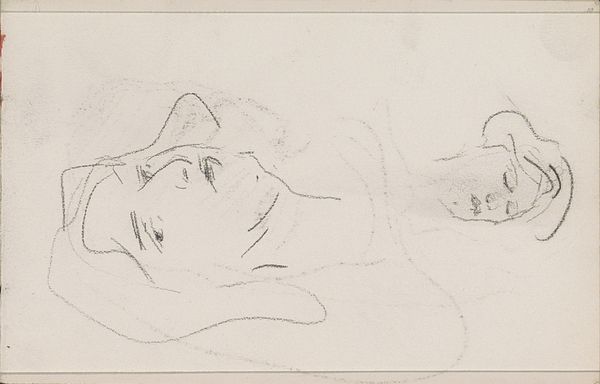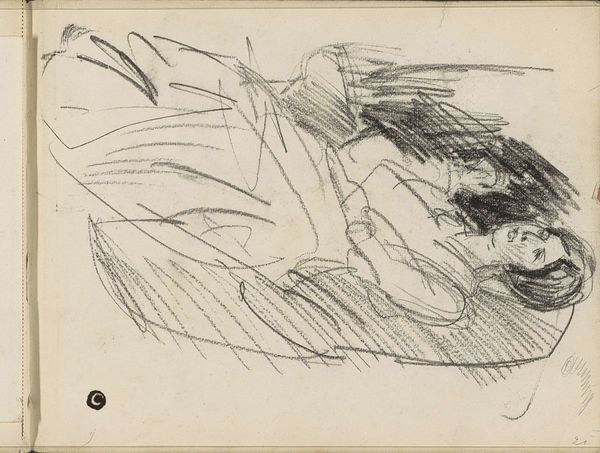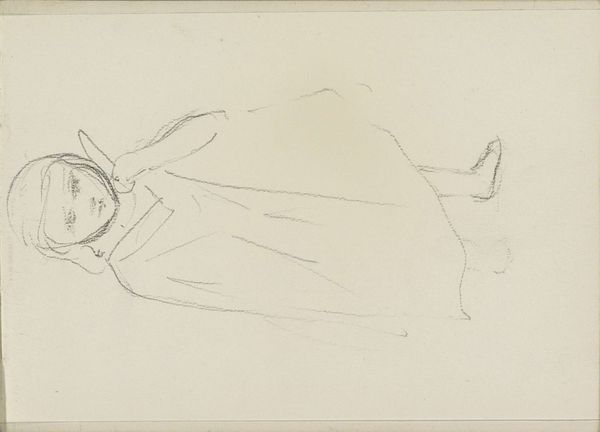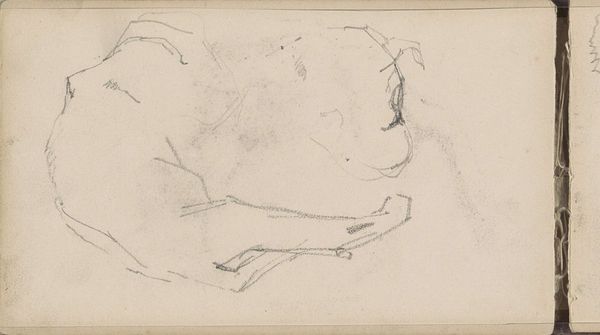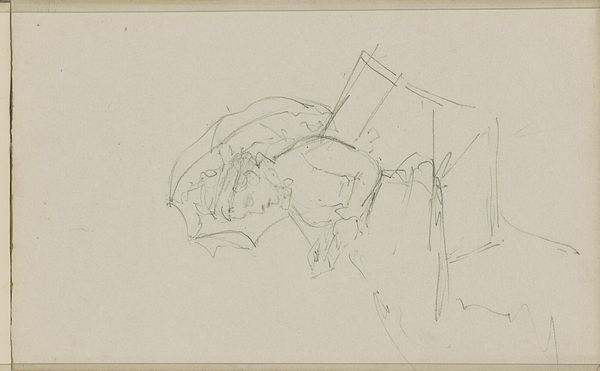
drawing, paper, pencil
#
drawing
#
amateur sketch
#
light pencil work
#
pencil sketch
#
figuration
#
paper
#
personal sketchbook
#
idea generation sketch
#
ink drawing experimentation
#
pen-ink sketch
#
pencil
#
line
#
sketchbook drawing
#
nude
#
sketchbook art
#
initial sketch
Copyright: Rijks Museum: Open Domain
Editor: This sketch, "Fantasiefiguur met uitgestrekte armen" by Monogrammist DS, from somewhere between 1850 and 1950, is so light and airy. It feels unfinished, like a fleeting thought captured on paper. What strikes you about this work? Curator: The pencil and paper invite us to consider the immediate circumstances of its making. What kind of pencil was used? What was the source and quality of the paper? These were likely inexpensive materials, suggesting a process driven more by utility than high art aspirations. Editor: So, it's more about the *act* of sketching, rather than a polished final piece? Curator: Precisely. Consider the social context: Who had access to such materials? Was this artist part of a formal academy, or working outside established structures? These "amateur sketches" challenge our preconceived notions about artistic production. Is this artist working in a time when access to art materials might not have been so easy? Editor: That's interesting. I hadn’t really thought about the paper and pencil as being key to the meaning. Curator: Think about the labour involved, even in this quick sketch. The hand, the eye, the thought... All physical acts manifested in these faint lines. It connects artmaking to broader ideas of work and consumption. It's the initial work product. How do we then start to value a "sketch" versus something with greater resource commitment? Editor: So by looking at the materials and the process, we can understand something about the artist and their place in society. That gives me a lot to consider. Curator: Indeed. By centering our attention on production, materiality, and labour, this seemingly simple sketch becomes a window into a much larger world of artistic creation.
Comments
No comments
Be the first to comment and join the conversation on the ultimate creative platform.
